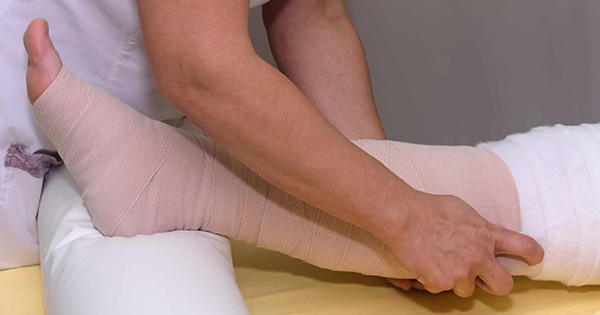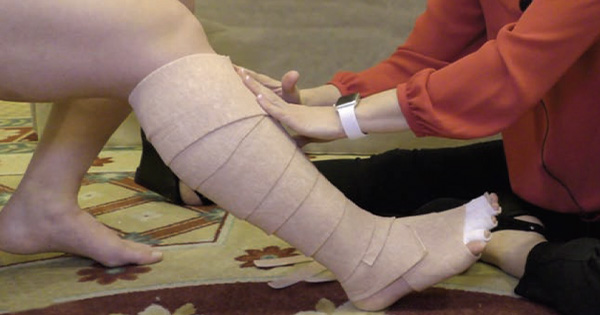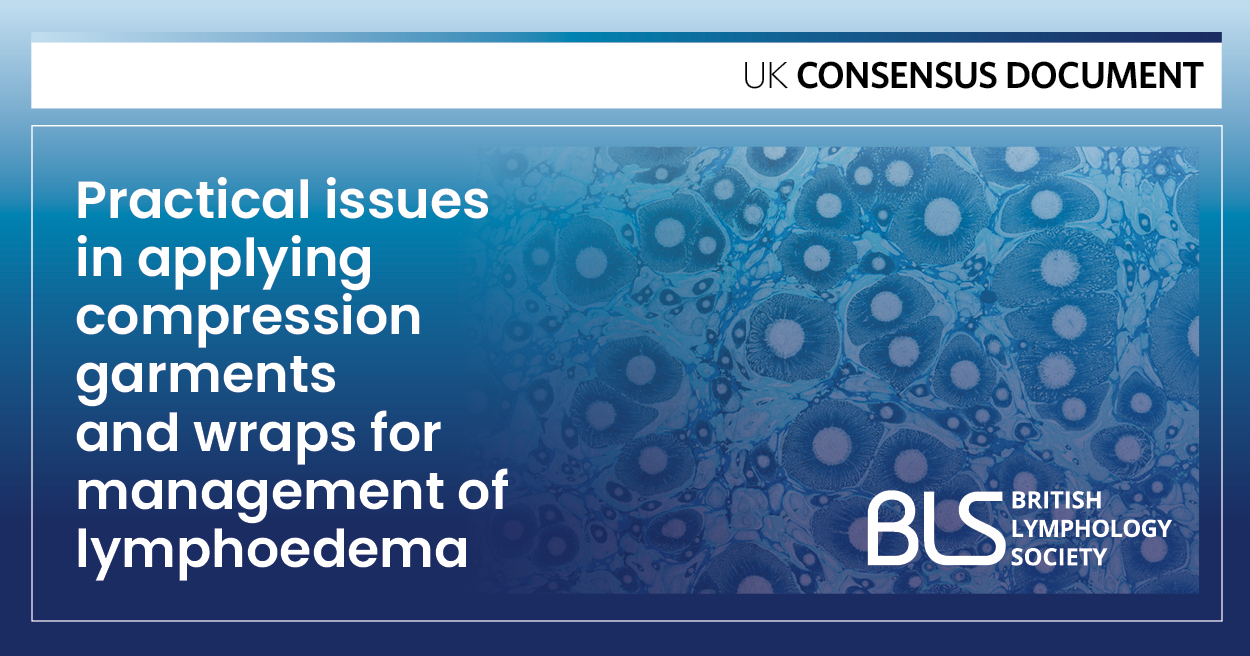An estimated 730,000 individuals in the UK, or 1.5% of the adult population, suffered from leg ulcers in 2012–2013 (Guest et al, 2015; Guest et al, 2020). According to The Burden of Wounds study (Guest et al, 2015), venous leg ulcers (VLUs) represented the greatest proportion of wound types (13%), with an estimated 278,000 confirmed cases, alongside an additional 420,000 cases (19%) classified as unspecified leg ulcers due to the lack of a definitive diagnosis (Guest et al, 2020). VLUs constitute a significant burden on both patients’ quality of life and healthcare systems (Guest et al, 2015).
Treatment of VLUs typically includes wound care, mobility promotion, consideration of venous intervention, nutritional support, pain management, and compression therapy (Browse et al, 1999). While all measures are important, compression therapy remains the cornerstone of VLU treatment, essential for healing (Scottish Intercollegiate Guidelines Network [SIGN], 2010; National Wound Care Strategy [NWCS], 2020). Compression therapy is a medical treatment involving the application of pressure to the lower limbs using bandages, stockings, hosiery or wraps (O’Meara et al, 2012). The therapeutic value of compression therapy for VLUs management has been recognised for centuries, evolving from rudimentary bandaging techniques to modern evidence-based interventions for managing VLUs (Browse et al, 1999).
With thousands of years’ history of applying compression therapy for patients with VLUs, compression therapy has been tested by plethora of clinical empirical evidence, including systematic reviews (Cullum et al, 2001; O’Meara et al, 2012; Shi et al, 2021) and Randomised Controlled Trials (RCTs). Alongside national guidelines from Royal College Nursing (RCN), SIGN 120 and NWCS, compression therapy is regarded as first-line gold standard therapy to promote healing for patients with VLUs.
Despite strong evidence supporting the effectiveness of compression therapy in healing VLUs and preventing recurrence, patients with VLUs often receive inconsistent compression therapy care in hospital settings across the UK (Lian et al, 2022). In 2019, a literature review (Lian et al, 2023) discovered that compression therapy is widely used in community settings but often discontinued when patients are admitted to hospitals. Subsequently, an online national survey of wound care specialists revealed that only 32% (32/101) of respondents applied compression therapy for their patients during hospital stays (Lian et al, 2022). This means that, in many hospitals, patients with VLUs are discharged without receiving any form of compression, leaving community nurses to initiate treatment days or even weeks later. This gap in service provision prolongs hospital stays, increases the risk of complications and ultimately places a greater strain on NHS resources (Douglas, 2002; Atkin et al, 2021). The failure to provide timely compression therapy represents a missed opportunity to improve patient outcomes. Research has shown that early intervention with appropriate compression can significantly reduce healing times and lower the risk of ulcer recurrence (NHS RightCare, 2017; Guest et al, 2018).
As specialist nurses and researchers working in this field, we urge NHS leaders, policymakers, healthcare educators and wound care specialists to prioritise compression therapy in hospital settings across the UK. Without urgent action, we risk perpetuating a cycle of delayed healing, unnecessary patient suffering, and increased healthcare costs to NHS as a whole (Heinen et al, 2007; Anderson et al, 2012; Jull et al, 2018; Atkin et al, 2021). Compression therapy is not just a community issue — it is a fundamental component of wound care that must be embedded within all healthcare environments, including hospitals.
As 4% of the adult population aged over 65 is diagnosed with VLUs (Atkin et al, 2021), the financial burden of managing these ulcers is expected to rise in line with the ageing population in the UK (Office for National Statistics, 2024). Now is the time to close the gap in service provision and ensure that every patient with a VLU has access to evidence-based treatment, regardless of their care setting!







